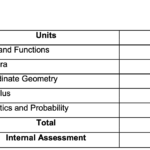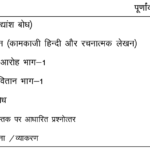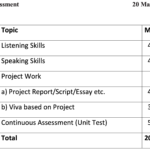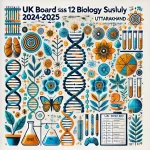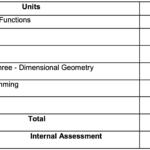The Uttarakhand Board of School Education (UBSE) has developed the Class 11th Biology syllabus for the 2024-2025 academic year to provide students with a strong foundation in biological sciences. This syllabus aims to build fundamental concepts, encourage scientific thinking, and prepare students for higher studies in fields like medicine, biotechnology, and environmental science.
Check UK board class 11 biology syllabus along with detailed 11th (eleventh) biology board examination pattern with list of practicals, activities and projects.
![UK Board Class 11th Biology Syllabus 2024-2025 [XI UBSE Uttarakhand] feature image](https://4syllabus.in/wp-content/uploads/2024/09/UK-Board-Class-11th-Biology-Syllabus-2024-2025-XI-UBSE-Uttarakhand-feature-image.webp)
Contents
UK Board 11th Biology Syllabus 2024-2025

Unit-I Diversity of Living Organisms
- Chapter-1: The Living World:- Biodiversity; Need for classification; three domains of life; taxonomy and systematics; concept of species and taxonomical hierarchy; binomial nomenclature
- Chapter-2: Biological Classification:- Five kingdom classification; Salient features and classification of Monera, Protista and Fungi into major groups; Lichens, Viruses and Viroids.
- Chapter-3: Plant Kingdom:- Classification of plants into major groups; Salient and distinguishing features and a few examples of Algae, Bryophyta, Pteridophyte, Gymnosperm (Topics excluded – Angiosperms, Plant Life Cycle and Alternation of Generations)
- Chapter-4: Animal Kingdom:- Salient features and classification of animals, non-chordates up to phyla level and chordates up to class level (salient features and at a few examples of each category). (No live animals or specimen should be displayed.)
Unit-II Structural Organization in Plants and Animals
- Chapter-5: Morphology of Flowering Plants: Morphology of different parts of flowering plants: root, stem, leaf, inflorescence, flower, fruit and seed. Description of family Solanaceae
- Chapter-6: Anatomy of Flowering Plants: Anatomy and functions of tissue systems in dicots and monocots.
- Chapter-7: Structural Organisation in Animals: Morphology, Anatomy and functions of different systems (digestive, circulatory, respiratory, nervous and reproductive) of frog.
Unit-III Cell: Structure and Function
- Chapter-8: Cell-The Unit of Life: Cell theory and cell as the basic unit of life, structure of prokaryotic and eukaryotic cells; Plant cell and animal cell; cell envelope; cell membrane, cell wall; cell organelles – structure and function; endomembrane system, endoplasmic reticulum, Golgi bodies, lysosomes, vacuoles, mitochondria, ribosomes, plastids, microbodies; cytoskeleton, cilia, flagella, centrioles (ultrastructure and function); nucleus.
- Chapter-9: Biomolecules: Chemical constituents of living cells: biomolecules, structure and function of proteins, carbohydrates, lipids, and nucleic acids; Enzyme – types, properties, enzyme action. (Topics excluded: Nature of Bond Linking Monomers in a Polymer, Dynamic State of Body Constituents – Concept of Metabolism, Metabolic Basis of Living, The Living State)
- Chapter-10: Cell Cycle and Cell Division: Cell cycle, mitosis, meiosis and their significance
Unit-IV Plant Physiology
Chapter-11: Photosynthesis in Higher Plants: Photosynthesis as a means of autotrophic nutrition; site of photosynthesis, pigments involved in photosynthesis (elementary idea); photochemical and biosynthetic phases of photosynthesis; cyclic and non-cyclic photophosphorylation; chemiosmotic hypothesis; photorespiration; C3 and C4 pathways; factors affecting photosynthesis.
Chapter-12: Respiration in Plants: Exchange of gases; cellular respiration – glycolysis, fermentation (anaerobic), TCA cycle and electron transport system (aerobic); energy relations – number of ATP molecules generated; amphibolic pathways; respiratory quotient.
Chapter-13: Plant – Growth and Development: Seed germination; phases of plant growth and plant growth rate; conditions of growth; differentiation, dedifferentiation and redifferentiation; sequence of developmental processes in a plant cell; plant growth regulators – auxin, gibberellin, cytokinin, ethylene, ABA.
Unit-V Human Physiology
Chapter-14: Breathing and Exchange of Gases: Respiratory organs in animals (recall only); Respiratory system in humans; mechanism of breathing and its regulation in humans – exchange of gases, transport of gases and regulation of respiration, respiratory volume; disorders related to respiration – asthma, emphysema, occupational respiratory disorders.
Chapter-15: Body Fluids and Circulation: Composition of blood, blood groups, coagulation of blood; composition of lymph and its function; human circulatory system – Structure of human heart and blood vessels; cardiac cycle, cardiac output, ECG; double circulation; regulation of cardiac activity; disorders of circulatory system – hypertension, coronary artery disease, angina pectoris, heart failure.
Chapter-16: Excretory Products and their Elimination: Modes of excretion – ammonotelism, ureotelism, uricotelism; human excretory system – structure and function; urine formation, osmoregulation; regulation of kidney function – renin – angiotensin, atrial natriuretic factor, ADH and diabetes insipidus; role of other organs in excretion; disorders – uremia, renal failure, renal calculi, nephritis; dialysis and artificial kidney, kidney transplant.
Chapter-17: Locomotion and Movement: Types of movement – ciliary, flagellar, muscular; skeletal muscle, contractile proteins and muscle contraction; skeletal system and its functions; joints; disorders of muscular and skeletal systems – myasthenia gravis, tetany, muscular dystrophy, arthritis, osteoporosis, gout.
Chapter-18: Neural Control and Coordination: Neuron and nerves; Nervous system in humans – central nervous system; peripheral nervous system and visceral nervous system; generation and conduction of nerve impulse
Chapter-19: Chemical Coordination and Integration: Endocrine glands and hormones; human endocrine system – hypothalamus, pituitary, pineal, thyroid, parathyroid, adrenal, pancreas, gonads; mechanism of hormone action (elementary idea); role of hormones as messengers and regulators, hypo – and hyperactivity and related disorders; dwarfism, acromegaly, cretinism, goitre, exophthalmic goitre, diabetes, Addison’s disease.
Uttarakhand Board 11th Biology Practical Syllabus 2024-2025
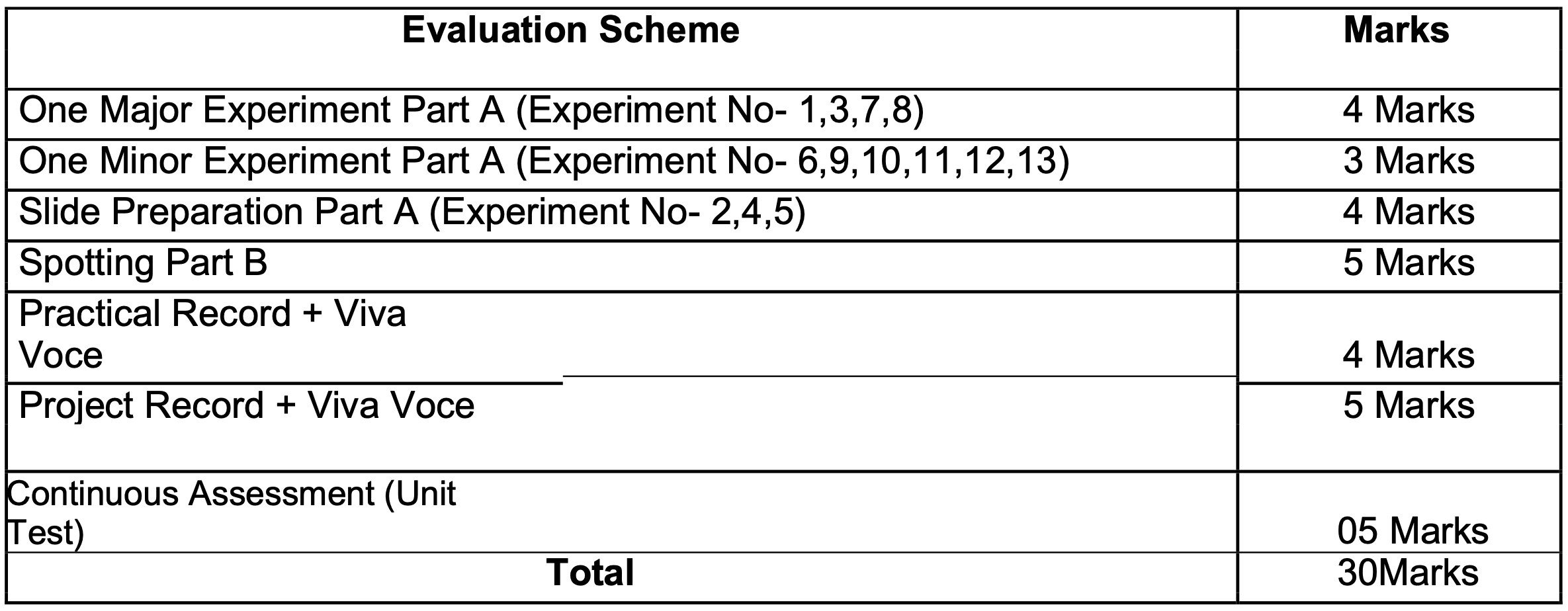 List of Experiments:-
List of Experiments:-
- Study and describe locally available common flowering plants, from family Solanaceae (Poaceae, Asteraceae or Brassicaceae can be substituted in case of particular geographical location) including dissection and display of floral whorls, anther and ovary to show number of chambers (floral formulae and floral diagrams), type of root (tap and adventitious); type of stem (herbaceous and woody); leaf (arrangement, shape, venation, simple and compound).
- Preparation and study of T.S. of dicot and monocot roots and stems (primary).
- Study of osmosis by potato osmometer.
- Study of plasmolysis in epidermal peels (e.g. Rhoeo/lily leaves or flashy scale leaves of onion bulb).
- Study of distribution of stomata on the upper and lower surfaces of leaves.
- Comparative study of the rates of transpiration in the upper and lower surfaces of leaves.
- Test for the presence of sugar, starch, proteins and fats in suitable plant and animal materials.
- Separation of plant pigments through paper chromatography.
- Study of the rate of respiration in flower buds/leaf tissue and germinating seeds.
- Test for presence of urea in urine.
- Test for presence of sugar in urine.
- Test for presence of albumin in urine.
- Test for presence of bile salts in urine.
Study and Observe the following (spotting):-
- Parts of a compound microscope.
- Specimens/slides/models and identification with reasons – Bacteria, Oscillatoria, Spirogyra, Rhizopus, mushroom, yeast, liverwort, moss, fern, pine, one monocotyledonous plant, one dicotyledonous plant and one lichen.
- Virtual specimens/slides/models and identifying features of – Amoeba, Hydra,liverfluke, Ascaris, leech, earthworm, prawn, silkworm, honey bee, snail, starfish, shark, rohu, frog, lizard, pigeon and rabbit.
- Mitosis in onion root tip cells and animals cells (grasshopper) from permanent slides.
- Different types of inflorescence (cymose and racemose).
- Human skeleton and different types of joints with the help of virtual images/models only.
More Links For Uttarakhand UBSE Class 11th Syllabus 2024-25
| Subject Name (11th) | Subject Code | Syllabus Link |
| 11th Maths | 128 | CLICK HERE |
| 11th Physics | 129 | CLICK HERE |
| 11th Chemistry | 130 | CLICK HERE |
| 11th Biology | 131 | CLICK HERE |
| 11th Hindi | 101 | CLICK HERE |
| 11th English | 103 | CLICK HERE |
| Latest UBSE Updates | UBSE | CLICK HERE |
| UK Board Class 12th All Subjects Syllabus |
All Subjects | CLICK HERE |
| Official Website | UK Board | CLICK HERE |
Important Faqs Related To UK Board Biology Syllabus
How much weightage is given to practicals in the Class 11 Biology exam?
The practical exam carries 30 marks. It focuses on various biological experiments, including the study of cells, tissues, organs, and physiological processes like photosynthesis and respiration, along with dissection and microscopic analysis.
What is the exam pattern for the UK Board Class 11 Biology theory paper?
The theory paper carries 70 marks and is divided into objective-type questions, short-answer questions, and long-answer questions. These test students' understanding of concepts, analytical abilities, and application of biological knowledge.
Where can students find the official UK Board Class 11 Biology syllabus for 2024-2025?
The syllabus is available on the UBSE Uttarakhand website and can also be obtained through schools or textbooks. Teachers typically provide a detailed breakdown of the syllabus during class.


